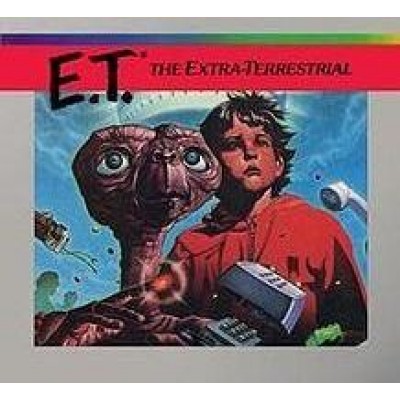
E.T. the Extra-Terrestrial: The Game That Almost Destroyed the Gaming Industry in the 1980s
In the early 1980s, the video game industry was booming, with Atari leading the charge in home entertainment. However, a combination of overconfidence, rushed development, and market saturation led to one of the most infamous events in gaming history—the near-collapse of the industry itself. Central to this story is the video game adaptation of Steven Spielberg's beloved film, E.T. the Extra-Terrestrial, often cited as one of the worst video games ever made. This is the tale of how a single game almost brought down an entire industry.
The Visionary Developer: Howard Scott Warshaw
Howard Scott Warshaw was a celebrated game designer at Atari, known for his successful titles like Yars' Revenge and Raiders of the Lost Ark. His innovative designs and ability to translate complex ideas into engaging gameplay made him a standout in the burgeoning video game industry.
- Yars' Revenge (1982): Considered one of the best games for the Atari 2600.
- Raiders of the Lost Ark (1982): The first video game adaptation of a major film, taking ten months to develop.
Warshaw's reputation caught the attention of Steven Spielberg, who wanted him to adapt E.T. the Extra-Terrestrial into a video game.
The Impossible Deadline
In July 1982, Atari secured the rights to create the E.T. video game, but there was a catch: the game needed to be ready for the holiday season, giving Warshaw just five weeks to develop it from scratch.
- Typical Development Time: 5-6 months for a game of this scale.
- Challenge Accepted: Warshaw was enticed by the challenge and the opportunity to work directly with Spielberg.
Despite the tight schedule, Warshaw poured his creativity and effort into the project, aiming to produce a game that captured the essence of the film.
The Result: A Flawed Masterpiece
Released in December 1982, the E.T. game was met with confusion and frustration by players.
- Gameplay Issues: The game was notoriously difficult to play, with confusing objectives and frequent pitfalls (literally, as E.T. kept falling into holes).
- Technical Limitations: The Atari 2600's hardware constraints made it challenging to create a game that matched the film's magic.
- Rushed Development: The five-week timeline didn't allow for proper testing and refinement.
Despite Warshaw's best efforts, the game failed to meet both consumer expectations and Atari's sales projections.
The Fallout: Atari's Decline
Atari had produced millions of cartridges, anticipating high demand. However, with poor sales and an oversaturated market, they were left with a massive surplus.
- Financial Losses: The game's failure contributed to Atari reporting a $536 million loss in 1983.
- The Landfill Legend: In 1983, Atari allegedly buried unsold copies of the game in a landfill in Alamogordo, New Mexico—a story confirmed in 2014 when the cartridges were unearthed.
The failure of E.T. became symbolic of the larger issues plaguing the video game industry at the time.
The Video Game Crash of 1983
The industry faced a significant downturn due to several factors:
Market Saturation:
- An influx of low-quality games and too many consoles confused and frustrated consumers.
- Companies lacked quality control, leading to a flood of subpar products.
Competition from Personal Computers:
- Affordable home computers offered better graphics and more diverse functionalities.
- Gamers shifted interest to PCs for entertainment and productivity.
Loss of Consumer Confidence:
- High-profile failures like E.T. eroded trust in video games.
- Retailers became hesitant to stock new games, fearing poor sales.
The crash led to a massive shakeout, with many companies going bankrupt or exiting the industry.
Misconceptions and Reality
While E.T. the Extra-Terrestrial is often blamed for the crash, it's essential to recognize that it was a symptom rather than the sole cause.
- Atari's Missteps: The company's aggressive licensing and overproduction strategies contributed significantly to its downfall.
- Industry Hubris: There was a widespread belief that any game would sell, leading to complacency in quality.
The Legacy of Howard Scott Warshaw
Despite the setback, Warshaw remains a respected figure in the gaming community.
- Career Shift: He later became a psychotherapist, drawing on his experiences in the high-pressure environment of game development.
- Reflections: Warshaw has spoken openly about the challenges he faced and the lessons learned, providing valuable insights into the industry's early days.
The Industry's Revival
The video game industry eventually recovered, thanks in large part to:
Nintendo's Entry:
- The release of the Nintendo Entertainment System (NES) in 1985 revitalized the market.
- Nintendo implemented strict quality control measures, restoring consumer confidence.
Improved Practices:
- Companies learned the importance of balancing innovation with quality assurance.
- The industry matured, with better project management and development timelines.
Lessons Learned
The story of E.T. the Extra-Terrestrial serves as a cautionary tale highlighting:
- The Dangers of Rushed Development:
- Unrealistic deadlines can compromise product quality.
- Market Awareness:
- Understanding consumer expectations is crucial for success.
- Quality Over Hype:
- A strong brand or license doesn't guarantee success without a solid product.
Conclusion
E.T. the Extra-Terrestrial is more than just a failed game; it's a pivotal chapter in the history of video games. It underscores the importance of thoughtful development, market understanding, and the risks of overextending in a booming industry. The challenges faced then have shaped the practices and standards that guide game development today.
Author's Note: The gaming industry has come a long way since the 1980s. Modern developers continue to learn from past mistakes, striving to create engaging, high-quality experiences for players worldwide. The tale of E.T. reminds us that behind every game is a story of ambition, creativity, and the relentless pursuit of bringing joy to others—even when the journey doesn't go as planned.
